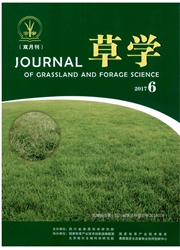

 中文摘要:
中文摘要:
气候变化与人类活动是草地变化两个最广泛的内在驱动力。本研究利用实际净初级生产力(NPP)和Miami气候模型模拟出潜在NPP并结合土地覆被数据来定量评估川西高原2000~2008年气候变化与人类活动对草地变化的相对作用。,研究结果表明,川西高原2000~2008年草地总体上处于恢复状态,草地恢复面积占牧区草地面积比例为91.98%,草地退化面积仅为8.02%,且显著退化与极显著退化面积仅占0.1%,但退化区域相对较为集中。就草地退化而言,人为因素主导的草地退化主要集中在研究区北部,气候因素主导的草地退化主要集中在研究区中南部。就草地恢复而言,人类活动在川西高原2000~2008年草地恢复中起到了决定作用,如“退牧还草”工程,但集约化的管理也对工程区等局部地方的草地带来巨大的压力..本研究结果为政府保持、改进以及制定新的草地保护政策提供了依据。
 英文摘要:
英文摘要:
Climate change and human activities are the two inner driving force factors of the grass changes. In this study, actual net primary productivity (NPP) , and potential NPP simulated by the Miami climate model, combined with the land cover data were used for quantitative evaluation of the relative importance of the climate change and human activities which produced influences on grassland changing in Western Siehuan Plateau during 2000 and 2008. The study showed that the grass in Western Sichuan Plateau was in a state of recovery in 2000 -2008. The proportion of grassland restoration are was as high as 91.98% in pastoral grassland area. The area of grassland degrada- tion was only about 8.02%. The grassland area of significant degradation and extremely significant degradation account for only 0. 1% while the grassland areas of degradation were relatively concentrated from 2000 to 2008. Grassland degradation caused by human factors was mainly distributed in the north of the study area and grassland degradation caused by climate factors was mainly concentrated in the south of the study area. The study showed that human activities were the decisive factors of grassland recovery in Westena Sichuan Plateau during 2000 and 2008, such as "returning grazing land to grass", but intensive management also brought great pressure on the grass in the the engineer- ing area. This study provided a basis for the government to maintain, improve and provide new grass protection policies.
 同期刊论文项目
同期刊论文项目
 同项目期刊论文
同项目期刊论文
 期刊信息
期刊信息
